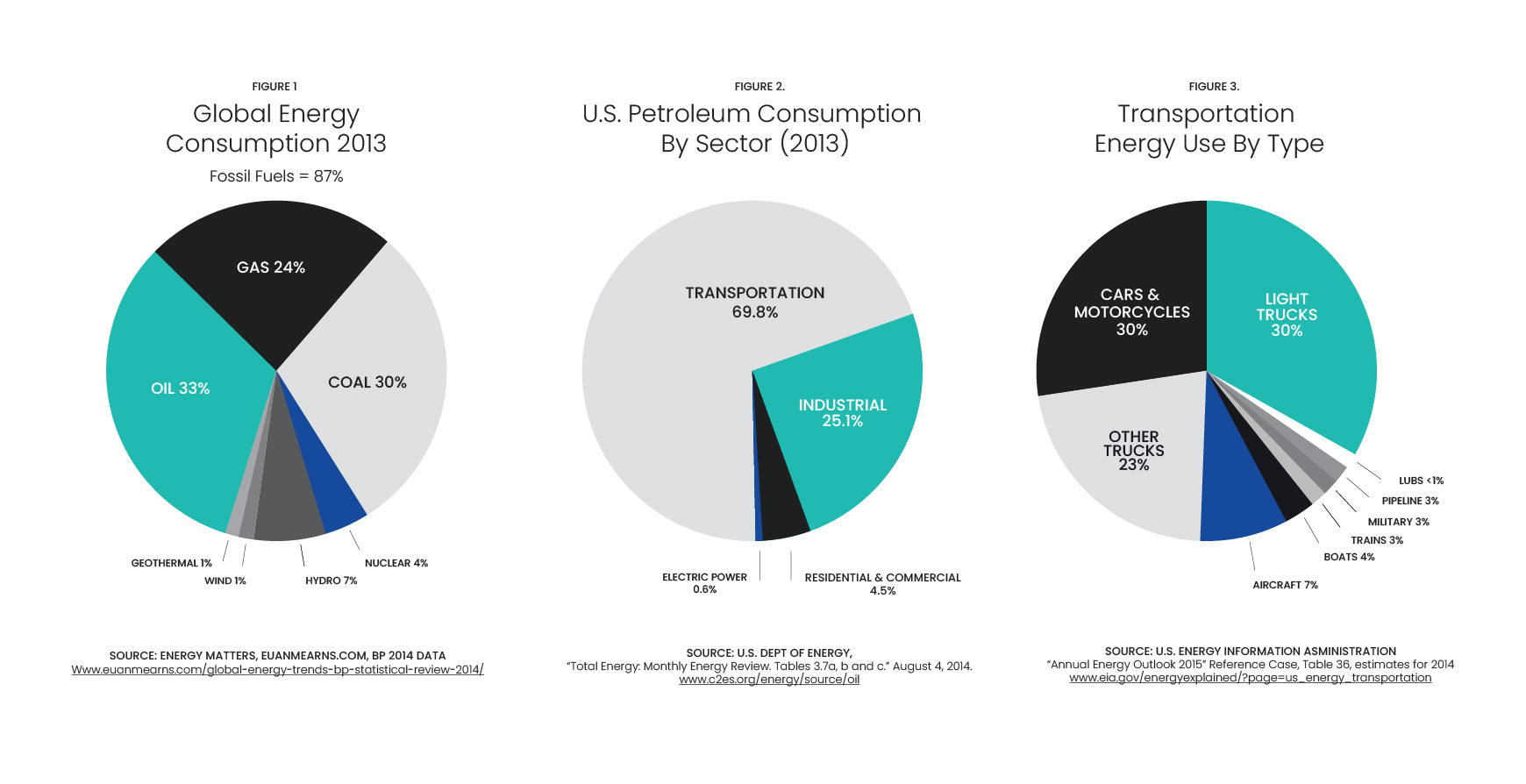Global Health
Impact of Automobiles
As a consequence of the convenience of the automobile, humans rely too much on that mode of transportation. In the US, 50% of all trips from the home are ≤ 3 miles. Of these short trips, greater than 60% are driven and only 2% are made by bicycle, one of the most efficient transportation modes (see NHTS 2009, FHWA Office of Policy).
Using cars so readily for even short trips has a significant negative impact on our health, leading to obesity and associated pathologies at all ages. It also has a negative impact on traffic congestion. Plus, because internal combustion engines are very inefficient when used for short stop-and-go trips and the environmental cost of burning fossil fuels is high and more so when done inefficiently, these short trips lead to environmental degradation by unnecessarily increasing our carbon footprint. Electric automobiles are better, but the electric power must be derived from clean renewable sources in order to stay green. In either case, using an electric car to go short distances still has a negative impact on global health when compared to making these short trips as part of a healthful exercise program.

Human Powered Vehicles
From a fundamental physics viewpoint, it is clear that more energy is needed to move large-mass fossil fuel-powered or electric automobiles even short distances compared to moving human powered vehicles those same distances. In addition, moving the larger mass will wear out more components that will eventually require energy and resources to replace, which puts more demand on the earth and its resources. In contrast, you consume much less energy to move the total mass of a bicycle or tricycle plus yourself, and less energy and resources are required to repair, rebuild and manufacture the lighter weight human powered vehicles.
Climate Change
About 30% of global energy consumption is based on petroleum, about 70% of the petroleum is consumed in the transportation sector, and 30% of the consumption by transportation is via personal vehicles wherein many of the trips are very short distances, as discussed previously.

It is clear that our use and combustion of fossil fuels is altering this earth much faster than anyone would have expected, with glaciers melting, changes in weather patterns, increased rate of species extinction, and widespread plastic-related pollution. Because the sequestration of carbon from plants and algae into coal and oil in the earth’s subterranean layers occurred over hundreds of millions of years, and we as a species are attempting to return that amount of carbon back into the atmosphere in a mere couple of hundred years, the global climate consequences of this action will be enormous and disastrous, as we are now witnessing. As the human population grows, we have no choice but to find more efficient and sustainable ways to thrive.
Cycling is an important example of an extremely efficient mode of transportation. Using a StreetStrider takes that efficient mode one step further by adding an excellent form of full-body but low-impact exercise to these everyday activities and short trips. The good news is that humans are adopting more sustainable lifestyles, and StreetStriding will always represent an excellent contribution that benefits our health, from personal to societal to global.

